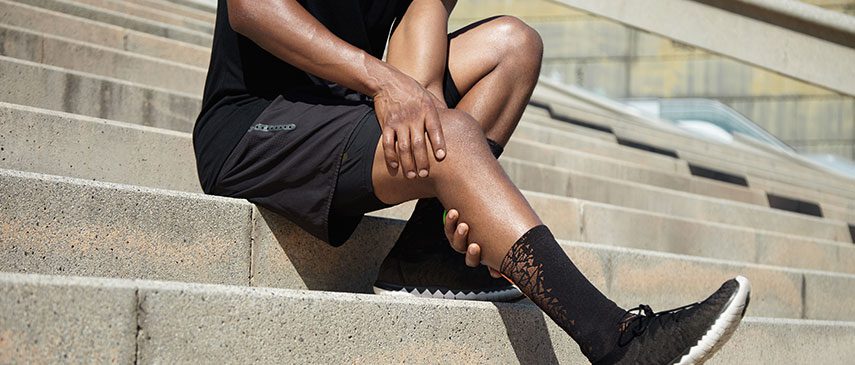How to get rid of IT band syndrome
Runner, Mile2Marathon coach and registered physiotherapist Bridget Pyke tells us everything we need to know about the common running injury

IT band syndrome is a common complaint among runners. The symptoms, which include an aching, burning or tenderness on the outside of the knee, feeling a click, pop or snap outside the knee or pain up and down the outside of your thigh, can make running very uncomfortable and eventually force you to stop altogether. We spoke with Bridget Pyke, a runner, physiotherapist and coach with Mile2Marathon in Calgary, who gave us the rundown on why IT band syndrome happens and what you can do to fix it.

RELATED: Rehab myths busted: how to (properly) recover from running injuries
The IT (iliotibial) band is a big band of connective tissue called fascia that starts outside the hip, runs down the outside of the thigh (enveloping the outer thigh muscles), and has attachments to the lateral knee cap and lower leg. When this band gets irritated, you can experience swelling or a snapping sensation on the outside of the knee, leading to pain and irritation.
Pyke explains that the fascia of the IT band is very strong and provides a link from the hip to the lower leg, which aids in single-leg stability. This is important for runners, because when you run, you spend most of your time on one leg or the other.
“Running is a repetitive single-leg activity that requires the control and co-ordination of multiple joints to achieve balance on one leg,” says Pyke. “Any issue above or below the knee (for example, a weak hip muscle or a stiff ankle) can result in extra stretch and strain being put on the IT band while running.”
She adds that as runners start to get tired, their ability to balance on one leg may begin to lessen, which also places greater stress on the IT band.
How can you prevent IT band syndrome?
Pyke says that IT band syndrome, like many repetitive strain injuries, is caused mainly by training errors. To prevent this, she recommends that runners monitor their training volume and intensity, and only ever increase either of those gradually. She also suggests incorporating strength work that focuses on your core and hip muscles, as well as single-leg stability to prevent injury. She notes that running on a slanted surface is another risk factor for IT band syndrome, so choose your routes wisely.

What should you do if you already have IT band syndrome?
As a first step, Pyke says you need to look at your training leading up to the injury to identify any possible training errors and consider reducing your running volume or intensity. Following a strength program to address the muscle weaknesses that caused the problem in the first place is also key to getting rid of IT band syndrome.
“Every runner is different,” she says, “so there is not a one-size-fits-all solution in terms of a strength or mobility program.”
Pyke adds that a common misconception is that stretching the IT band will help with recovery, but the reality is that hip-strengthening exercises have been shown to be far more effective. If your IT band is causing you pain, she recommends seeing a sports therapist to learn about how your body’s biomechanics might be putting extra strain on your IT band.
Hip exercises to help prevent IT band syndrome
Banded crab walks: Place an exercise band around your lower thighs, and stand in a half-squat position. Slowly take small steps to the side, making sure to engage your hip muscles with each step. Take 8 to 15 steps in one direction, then do the same in the other direction.
Clamshells: Lay on your side with your knees stacked on top of each other and your legs bent. Squeeze your glutes and rotate your top leg toward the ceiling. Pause at the top, then lower your leg back down. Repeat this 8 to 15 times on each side. To make it more challenging, place a resistance band around your thighs.
Single-leg Romanian deadlifts: Stand on your left foot with your knee slightly bent, holding a dumbbell in your left hand. Keeping your back straight and your core tight, hinge forward at the hips to bring your torso parallel to the floor while raising your right leg up behind you. Return to standing while lowering your right leg. Repeat this 8 to 15 times on each leg.
Side step-ups: Find a box, bench or step that is approximately one foot high. Stand with the box to your right side, holding a weight out in front of you. Bend your right knee and place your right foot on the step. Push with your right foot to stand up straight, driving your left knee into the air. Slowly lower your left foot back down to the floor. Repeat 8 to 15 times on each leg.
RELATED: The do’s and don’ts of recovery with physiotherapist Chris Napier


